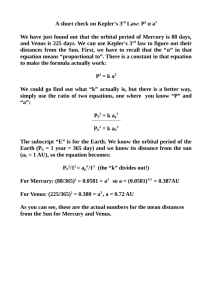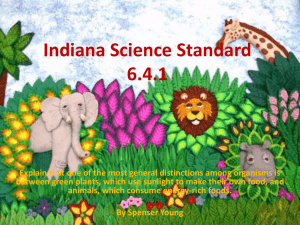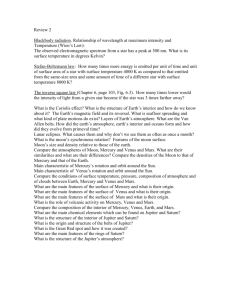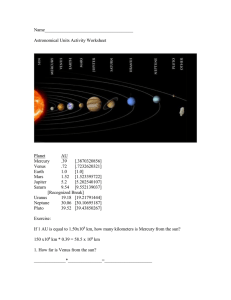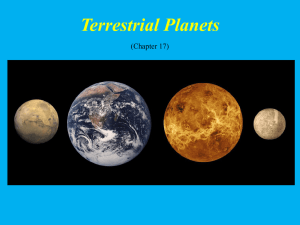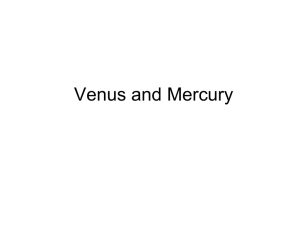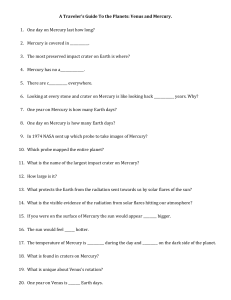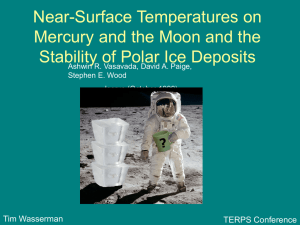AST 248 HW for Chapter 7 Ryan Richards
advertisement
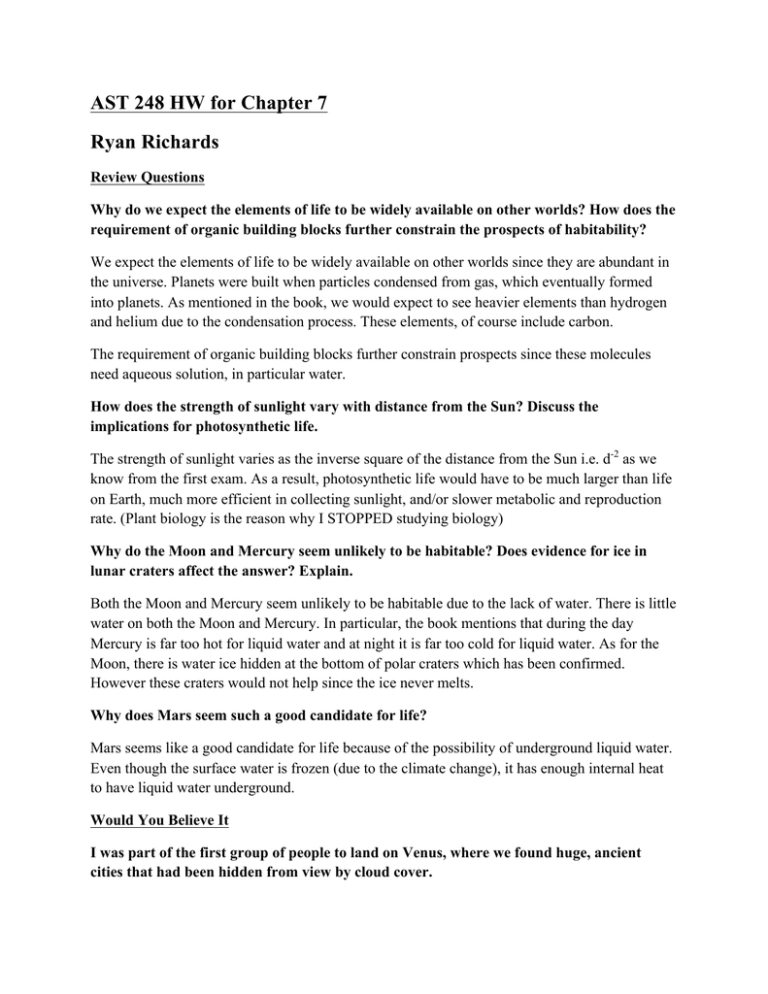
AST 248 HW for Chapter 7 Ryan Richards Review Questions Why do we expect the elements of life to be widely available on other worlds? How does the requirement of organic building blocks further constrain the prospects of habitability? We expect the elements of life to be widely available on other worlds since they are abundant in the universe. Planets were built when particles condensed from gas, which eventually formed into planets. As mentioned in the book, we would expect to see heavier elements than hydrogen and helium due to the condensation process. These elements, of course include carbon. The requirement of organic building blocks further constrain prospects since these molecules need aqueous solution, in particular water. How does the strength of sunlight vary with distance from the Sun? Discuss the implications for photosynthetic life. The strength of sunlight varies as the inverse square of the distance from the Sun i.e. d-2 as we know from the first exam. As a result, photosynthetic life would have to be much larger than life on Earth, much more efficient in collecting sunlight, and/or slower metabolic and reproduction rate. (Plant biology is the reason why I STOPPED studying biology) Why do the Moon and Mercury seem unlikely to be habitable? Does evidence for ice in lunar craters affect the answer? Explain. Both the Moon and Mercury seem unlikely to be habitable due to the lack of water. There is little water on both the Moon and Mercury. In particular, the book mentions that during the day Mercury is far too hot for liquid water and at night it is far too cold for liquid water. As for the Moon, there is water ice hidden at the bottom of polar craters which has been confirmed. However these craters would not help since the ice never melts. Why does Mars seem such a good candidate for life? Mars seems like a good candidate for life because of the possibility of underground liquid water. Even though the surface water is frozen (due to the climate change), it has enough internal heat to have liquid water underground. Would You Believe It I was part of the first group of people to land on Venus, where we found huge, ancient cities that had been hidden from view by cloud cover. This is highly not believable. Even though one may argue that the Sun was dimmer in the past, we have to remember that the high level of carbon dioxide in the atmosphere of Venus causes it to be very hot. This would not allow for the presence of oceans and it is too hot for ancient cities to be there. We deposited bacteria that get energy from chemical reactions with sulfur compounds into the upper clouds of Venus, and they are surviving. This is believable. The book mentions that the on the upper clouds of Venus the greenhouse effect is far weaker compared to the surface. Due to the sulfur content, chemical reactions may provide enough energy for extremophiles to live in the upper clouds. The drilled sample showed no signs of life on asteroid B612, but we found many complex organic molecules. I would believe this. As we have continuously learned, there is organic matter on meteors and asteroids even in the absence of life. Therefore we should not be surprised. Quick Quiz Oxygen and carbon are (c) the third- and fourth-most-abundant elements in the universe On an asteroid that is twice as far as the Earth from the Sun, the strength of sunlight would be (c) ¼ as great as on Earth Compared to liquid water, liquid methane is (a) colder Frozen lakes often have liquid water beneath their icy surfaces primarily because (b) ice floats and provides insulation to the water below Temperatures on Mercury are (b) very hot in the day and very cold at night On Venus, liquid water (c) exists only high in the atmosphere The reason that Venus is so much hotter than the Earth is (c) its thick, carbon dioxide atmosphere creates a far stronger greenhouse effect
